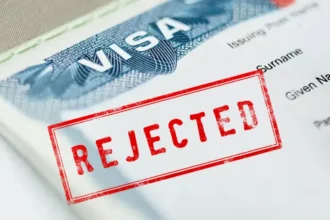Partner visas are among the most significant pathways for couples seeking to live together in Australia. The Australian Partner Visa program allows the spouse or de facto partner of an Australian citizen, permanent resident, or eligible New Zealand citizen to apply for residence. While the program is well-established, it is also complex and highly scrutinized, resulting in many applicants facing delays.
Despite thorough instructions from the Department of Home Affairs, many applicants unknowingly make mistakes that lead to extended processing times, additional requests for information, or even outright refusals. These delays can disrupt personal lives and cause emotional and financial stress.
This comprehensive article outlines the most common mistakes that delay Partner Visa applications, explaining why they occur and how applicants can avoid them. Additionally, this post incorporates the latest data, procedural insights, and direct links to official resources for accuracy and ease of use.
Understanding the Partner Visa Process
Overview of Partner Visa Subclasses
Australia offers two main Partner Visa subclasses:
-
Subclass 309 (Temporary Partner Visa): Allows applicants to stay in Australia while their permanent visa is processed.
-
Subclass 100 (Permanent Partner Visa): Typically granted after two years if the relationship is ongoing.
Both visas require proof of a genuine and continuing relationship with an Australian citizen, permanent resident, or eligible New Zealand citizen.
Application Stages and Timeline
-
Application submission with complete documentation.
-
Initial assessment by the Department of Home Affairs.
-
Possible requests for additional information or interviews.
-
Granting of the temporary visa (Subclass 309).
-
Ongoing assessment leading to the permanent visa (Subclass 100).
The Department of Home Affairs reports an average processing time of 21 to 26 months for Partner Visas as of 2025, but incomplete applications can extend this period substantially.
Source: Department of Home Affairs Processing Times
Common Mistakes That Cause Delays in Partner Visa Applications
1. Submitting Incomplete or Incorrect Applications
One of the most prevalent errors is submitting an application that lacks complete and accurate information.
-
Missing signatures, dates, or incomplete sections can cause the Department to return the application or request clarifications.
-
Inconsistencies between forms and supporting documents raise doubts and prolong processing.
-
Failure to provide translations for documents not in English results in processing delays.
Why This Happens: Many applicants underestimate the importance of precision or rush the submission process without thorough review.
How to Avoid:
-
Carefully review all forms and documents before submission.
-
Use the Department’s checklist specific to Partner Visas available here.
-
Ensure all supporting evidence is correctly translated by certified translators.
-
Complete applications via the official ImmiAccount portal.
2. Insufficient Proof of Relationship
The cornerstone of a Partner Visa application is proving the genuineness and continuity of the relationship. The Department applies rigorous scrutiny to ensure the relationship is not fabricated.
Common deficiencies include:
-
Lack of joint financial commitments such as shared bank accounts, utility bills, or lease agreements.
-
Limited or poor-quality photographic evidence that does not cover a wide timeframe.
-
Absence of personal statements or affidavits from friends and family attesting to the relationship.
-
Failure to show social recognition of the relationship through invitations, holiday records, or social media posts.
Why This Causes Delay: The Department often issues a Request for Further Evidence (RFE), which stops processing until the applicant supplies satisfactory proof.
How to Avoid:
-
Provide diverse and comprehensive evidence, including joint finances, living arrangements, communications, and social acknowledgments.
-
Refer to the Department’s detailed guidelines on evidence of relationship here.
-
Organize documents chronologically and label them clearly to facilitate easy assessment.
3. Delays in Meeting Health and Character Requirements
Every applicant must satisfy Australia’s health and character standards.
-
Medical exams must be conducted by Department-approved panel physicians.
-
Police clearances are required from every country the applicant has lived in for 12 months or more over the past 10 years.
-
Failure to provide these on time or to disclose relevant medical conditions or criminal records leads to delays or refusals.
According to the Department’s 2024 report, incomplete health or character documents were among the top causes of delays.
How to Avoid:
-
Schedule medical exams early and through panel physicians listed here.
-
Request police certificates well before application submission.
-
Disclose all relevant health and character information honestly and comprehensively.
4. Incorrect or Missing Sponsor Documentation
The Australian partner acts as a sponsor and has legal obligations.
-
Incorrectly completed or unsigned sponsorship forms can cause application rejection.
-
Lack of evidence demonstrating the sponsor’s Australian citizenship, permanent residency, or eligible New Zealand citizenship.
-
Previous breaches of sponsorship obligations by the sponsor can lead to application refusals or longer scrutiny.
How to Avoid:
-
Sponsors should carefully complete and sign the Sponsorship Form (Form 40SP).
-
Provide certified evidence of sponsor status such as birth certificates, citizenship certificates, or passports.
-
Review sponsorship obligations detailed here.
5. Not Reporting Changes in Circumstances Promptly
Applicants often neglect to inform the Department about significant life changes after lodging the visa application.
Examples include:
-
Change of address or contact information.
-
Changes in relationship status (e.g., separation, marriage breakdown).
-
Changes in employment or financial status.
Failure to notify the Department can lead to application suspension, additional investigations, or refusals.
How to Avoid:
-
Use your ImmiAccount to update personal details and circumstances as soon as they change.
-
Keep all communication records with the Department.
-
Consult an immigration professional if unsure whether a change requires reporting.
6. Applying Without Legal or Migration Agent Assistance When Necessary
While many applicants manage their Partner Visa applications independently, some cases are complicated by:
-
Previous visa refusals or cancellations.
-
Complex family or relationship histories.
-
Issues involving criminal records or health concerns.
In such cases, failing to seek professional guidance can cause costly mistakes and processing delays.
How to Avoid:
-
Consider consulting a registered migration agent or immigration lawyer.
-
Find accredited professionals via the Migration Agents Registration Authority (MARA).
-
Professional advice can help tailor the application, avoid pitfalls, and respond effectively to Department requests.
Real-Time Data on Partner Visa Processing Times and Delays
The Department of Home Affairs publishes quarterly data on visa processing times. As of the first quarter of 2025:
-
Median processing time for Partner Visa subclass 309 applications is approximately 21 months.
-
Applications with missing information or insufficient evidence experience an average delay of an additional 6 to 12 months.
-
Requests for further information (RFIs) are issued in about 30% of Partner Visa cases, often due to inadequate evidence or documentation errors.
Source: Department of Home Affairs Visa Processing Times
Practical Tips for Applicants to Avoid Delays
Start Early and Prepare Thoroughly
Begin gathering necessary documents—medical, police, relationship evidence—well before lodging the application.
Follow Official Guidelines Meticulously
Refer consistently to the Department’s official checklists and guides for Partner Visa applications:
Organize and Label Documents Clearly
A well-organized application with indexed documents facilitates quicker processing.
Use the ImmiAccount Portal
Apply and communicate through the Department’s secure portal to reduce errors and ensure timely updates.
Respond Promptly to Requests for Information
If the Department requests further evidence, respond within the specified timeframe with comprehensive documentation.
Seek Professional Advice When Needed
Registered migration agents and lawyers can navigate complex situations efficiently, preventing costly mistakes.
Case Studies Illustrating Common Mistakes and Outcomes
Case Study 1: Delayed Application Due to Incomplete Relationship Evidence
A couple submitted their Partner Visa without joint financial statements or affidavits. The Department issued a request for further evidence, delaying the process by nearly a year. After submitting comprehensive proof, their visa was eventually granted.
Case Study 2: Health Requirement Oversight
An applicant failed to obtain police certificates from a country they briefly lived in. This oversight resulted in a visa refusal. After providing the missing documents and reapplying, the application was approved—albeit with a processing delay of two additional years.
Useful Official Links and Resources
Frequently Asked Questions (FAQs)
Q1: How long does the Partner Visa application process usually take?
A1: The average processing time is between 21 and 26 months, but delays due to mistakes can extend this significantly.
Q2: What evidence best proves a genuine relationship?
A2: Joint financial documents, lease agreements, photographs spanning time, affidavits from acquaintances, and evidence of social recognition are critical.
Q3: Can I apply for a Partner Visa from outside Australia?
A3: Yes, the subclass 309 visa is designed for offshore applicants, followed by the permanent subclass 100 visa.
Q4: What should sponsors be aware of?
A4: Sponsors must complete their obligations honestly and provide evidence of their status and ability to support the applicant.
Q5: Is it necessary to hire a migration agent?
A5: While not mandatory, professional guidance is advisable for complex cases to avoid costly errors and delays.
Conclusion
Partner Visa applications to Australia require careful preparation, honesty, and attention to detail. Common mistakes such as incomplete applications, insufficient relationship evidence, ignoring health or character requirements, sponsor errors, failure to report changes, and lack of professional advice can cause significant processing delays.
By understanding these pitfalls and following the Department of Home Affairs’ guidelines, applicants can improve their chances of timely visa approval, facilitating their journey to live together in Australia without unnecessary hurdles.



